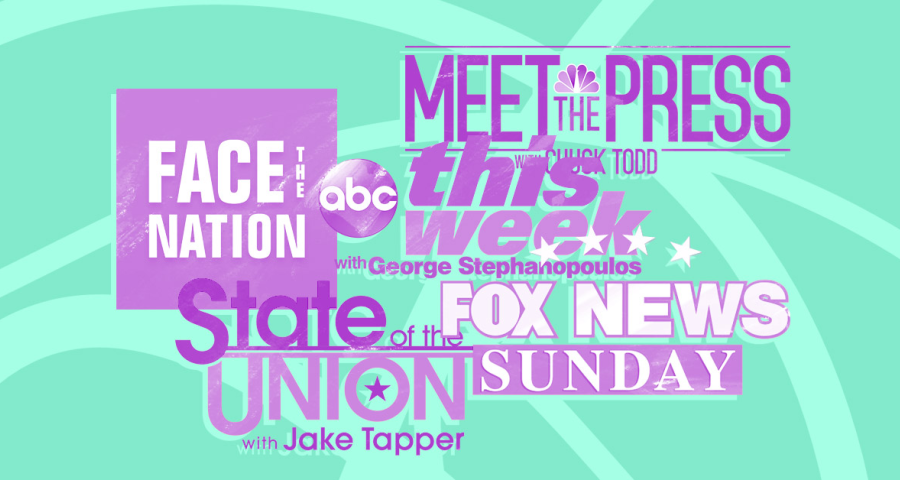Over the past three months, right-leaning guest panels on the five major Sunday political news shows have outnumbered left-leaning panels 33 to six. Nearly half of all guest panels titled right, meaning they had more right-leaning than left-leaning guests; by comparison, less than 10 percent of the panels tilted left. Forty-three percent of the panels were ideologically balanced.

Melissa Joskow / Media Matters
By a wide margin, the show with the most imbalanced panels overall was NBC’s Meet the Press, where 85 percent of all panels tilted right. In total, 11 of the show’s 13 panels leaned conservative, while none of the panels leaned left. Two panels were ideologically balanced.
Panels on Fox News Sunday were the second most conservative leaning, with 62 percent tilting right. In total, eight panels were right-leaning, while just two panels were left-leaning. Three panels were ideologically balanced.
On CBS’ Face the Nation, conservative panels outnumbered left-leaning panels by a ratio of 2-to-1. Six panels tilted right, three panels tilted left, and four panels were ideologically neutral.
On ABC’s This Week, 40 percent of panels were right-leaning while there wasn’t a single left-leaning panel. Overall, six panels tilted right, no panel tilted left, and nine panels were ideologically balanced.
On CNN’s State of the Union, 79 percent of panels were ideologically balanced. Two panels tilted right, one panel titled left, and 11 panels were ideologically balanced.
In total, across all five shows, 33 panels tilted right while just six panels tilted left. Twenty-nine panels were ideologically balanced.

Melissa Joskow / Media Matters
Previous Media Matters studies show that Sunday shows have favored conservative guests for years, regardless of whether a Republican or a Democrat was in the White House.
Methodology
We reviewed every edition of ABC's This Week, CBS' Face the Nation, NBC's Meet the Press, Fox Broadcasting Co.'s Fox News Sunday, and CNN's State of the Union from August 5 through October 28. We coded guest appearances for all five programs for political ideology, labeling the guests as Democratic/progressive, Republican/conservative, or neutral. We classified guests based on either their own ideological self-identification or their public affiliation with an openly partisan or ideological organization or institution. The neutral category does not necessarily imply strict ideological neutrality but, rather, might be better understood as neutral/centrist/nonpartisan -- we use the term “neutral” for the sake of brevity.
We coded panels as tilting left when a majority of participants were Democratic or progressive; we coded panels as tilting right when a majority of participants were Republican or conservative; and we coded panels as balanced when Democratic and progressive guests numbered equally with Republican and conservative guests. Neutral guests did not affect a panel's tilt. A panel was defined as a group of multiple guests appearing on a show simultaneously, with the exception of 1) debates between political figures, 2) joint interviews, which we defined as a newsmaker interview with two or more guests where the guests have a tangible connection or are being interviewed with the express purpose of sharing similar viewpoints, and 3) focus groups with voters.
